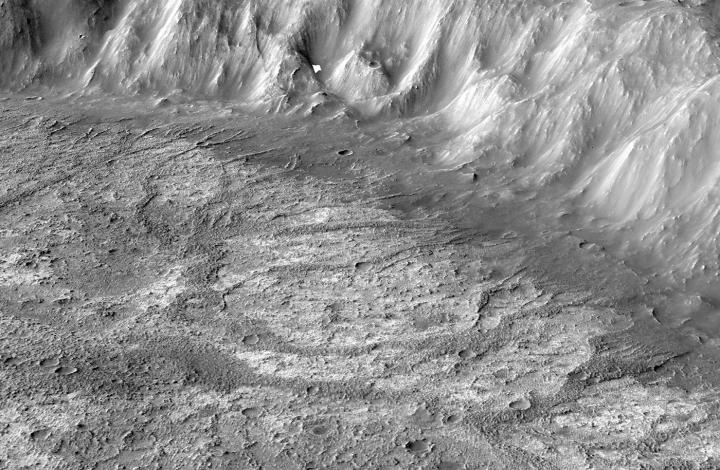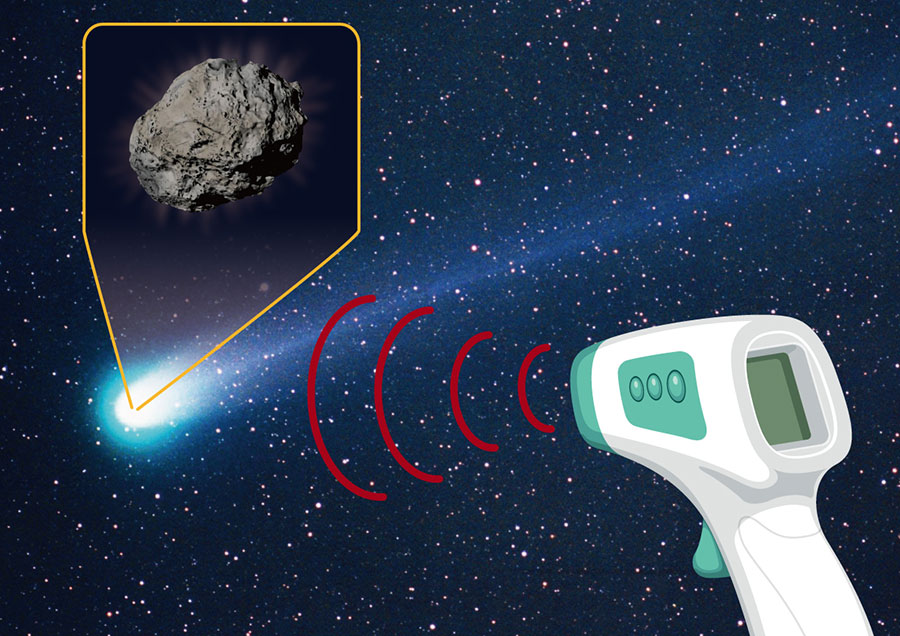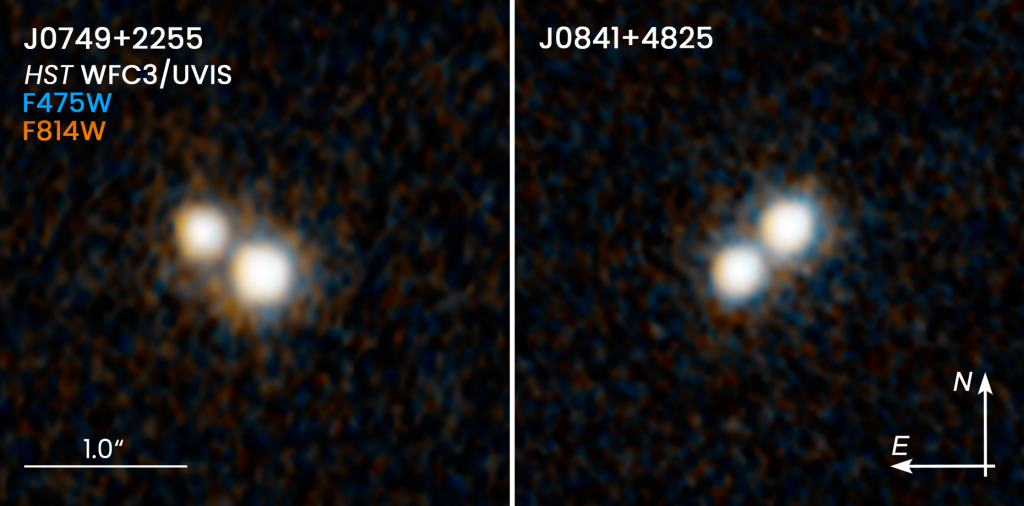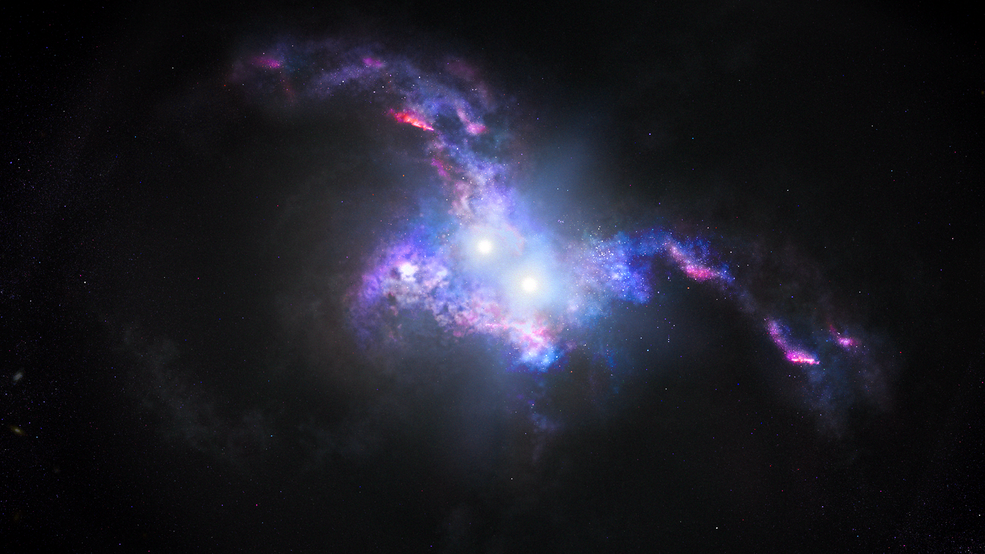A new study examined the effects of recent increases in the number of space objects orbiting Earth and found that the proliferation of satellites contributes to a nearly ten percent increase over natural lighting of the night sky. Plus, Mars, Uranus, Neptune, ancient Earth, volcanoes, and our weekly What’s Up segment.
Media
Transcript
Hello and welcome to the Daily Space. I am your host Dr. Pamela Gay.
And I am your host Beth Johnson.
And we are here to put science in your brain.
As we were setting up to record this episode, we spotted news of results coming from FermiLab about how a special kind of particle, a muon, has been measured to not quite behave as predicted. This story was too complex to prepare quickly for today’s episode, but I will be discussing it in-depth in our next episode, and for now, I’d like to say, for the first time, we may have a measurement that doesn’t entirely match our current Standard Model of Particle Physics. We’ve always known that theory was incomplete, and these measurements might finally point us in the right direction to figure out what else the universe is hiding at its smallest scales.

In other news of high-energy results, but this time more of a planetary variety, we have results from the Chandra X-ray observatory showing for the first time that Uranus is subject to X-rays from the Sun, and even at its great distance, it can reflect those X-rays back to us in detectable numbers. A new image shows a Chandra X-ray image of Uranus from 2002 (in pink) superimposed on an optical image from the Keck-I Telescope in Hawaii.
This work is published in the Journal of Geophysical Research: Space Physics and in addition to explaining how these X-rays should largely originate from the scatter of solar X-ray light (something we see at Jupiter and Saturn), some may also come from aurorae as we have here on Earth. Charged particles hitting the rings could also produce additional X-rays, as we see at Saturn. Bottom line: while every planet is different, the science that describes them works by the same rules, and Uranus behaves nicely like its siblings.
From Uranus, we now jump to Mars. In recent years, it has become more and more evident that Mars once had liquid water on its surface. Images from rovers and orbiting cameras like those on Mars Reconnaissance Orbiter show all the same features that we see in formerly wet deserts here on Earth. These streambeds, river deltas, and other features make it clear Mars had water, but what they don’t tell us is if Mars was an icy world that periodically got above freezing or a lush world that lingered above freezing. To figure this out, scientists need to find the kind of evidence that gets left behind by glaciers, and that evidence has now been found.

In a new paper in the Planetary Science Journal, researcher Ben Boatright describes a crater discovered to have geologic formations on the crater floor that point to streams and ponds forming. This isn’t unusual. What is unusual is the lack of evidence of a river or stream flowing into the crater to feed those water systems. Instead, they see the characteristic groves of a glacier that has been melting. This paints a picture of an ice age Mars that sometimes got above freezing, allowing glaciers to melt and feed hydrologic systems in craters like this one. While this paper only looks at one crater in great detail, Boatwright has another forty craters he’s studying that show similar features.
In additional news, folks have been discussing mining other objects and worlds in our solar system for decades, but exactly what is out there to be mined and utilized by astronauts isn’t well known. Sure, we know there is helium and water and some metals, but, if you’re going to truly set up a home in outer space, it might be nice to find some other creature comforts. For instance, baby powder.

In a press release that made Pamela giggle, a team led by Takafumi Ootsubo announces the discovery of a dead comet covered in large-grained phyllosilicate. What is phyllosilicate? Why it is the scientific term for talcum powder. This particular dead comet is called P/2016 BA14, and it is about 800 meters across. After many trips through the inner solar system, it has used up most of its ice and is now a core coated in talcum powder. By studying the state of this material, researchers were able to figure out this dead comet has been heated to more than 330 degrees Celcius in its past, so it’s baked on talcum powder. I don’t really foresee anyone mining this comet any time soon, but it’s good to know if you have problems with your space suit chafing, there is a solution out there among the worlds.
Water, water everywhere / Nor any drop to drink
Once upon a time, back in a period we call the Archean eon, around 3.5ish billion years ago, that line from The Rime of the Ancient Mariner may have accurately described the planet we call Earth. The mantle, that thick layer between the crust and the core, is a strange blend of solid and viscous liquid, and back in the earlier days of our planet, it was hotter than it is today, ranging from 1900-3000 degrees Kelvin as opposed to today’s much more balmy 1600-2600 degrees Kelvin. And that bonus heat could mean that the mantle didn’t have as much water as it does now, so maybe all that extra water it has now was on the surface of Earth, creating a global ocean.

In a new study in AGU Advances, a pair of researchers present findings that suggest that not only was there much more water on the planet’s surface, but that water could have changed the composition of our early atmosphere, reducing how much sunlight got reflected out into space. And those two factors would also have changed the global climate and what we think of as the habitat that first supported life.
Co-author Rebecca Fischer explains: It’s sometimes easy to forget that the deep interior of a planet is actually important to what’s going on with the surface. If the mantle can only hold so much water, it’s got to go somewhere else, so what’s going on thousands of kilometers below the surface can have pretty big implications.
The press release explains the work of co-author Junjie Dong, [who] developed a model to estimate the total amount of water that Earth’s mantle could potentially store based on its temperature. He incorporated existing data on how much water different mantle minerals can store and considered which of these 23 minerals would have occurred at different depths and times in Earth’s past. He and his co-authors then related those storage estimates to the volume of the surface ocean as Earth cooled.
These findings challenge the assumption that our global ocean size hasn’t changed much over geological time. At higher temperatures, minerals don’t hold on to water. Their structure is too “loose” so the water evaporates out. If it didn’t go into the mantle at those early temps, then it might have stayed on the surface. As the mantle cooled, the water was able to be trapped in the minerals, and the sea levels would have receded.
Now, there is a lot of uncertainty in these results. And that’s okay. It’s the first time the connection has been made between the temperature of the mantle minerals and their potential water content. Our global water budget and its fluctuations have been hard to quantify, and this research is a starting point. It’s also going to be useful for looking at other planets like Mars, which likely had a small ocean on its surface, and even at exoplanets and their potential water budget.
Speaking of water on Earth, scientists continue to work toward understanding the influence of our planet’s inner workings on surface water. In a new paper published in the journal Geology, a team of researchers analyzed two volcanically created lakes in Oregon at Newberry volcano. These two lakes are both fed by the underlying volcano: Paulina Lake is fed with volcanic geothermal fluids, and East Lake is fed by volcanic gases. So how do those two different methods affect the lakes’ ecosystems, which are popular fishing grounds?

Paulina Lake is simply warmer. East Lake, however, acquires carbon dioxide, hydrogen sulfide, and minor amounts of mercury and methane that seep up into the bottom of the lake. In particular, that carbon dioxide is concerning. Lake Nyos in Cameroon is also a volcanically fed lake that has experienced not only alarming levels of carbon dioxide in the water but also what is called a “limnic eruption”, or violent outgassing, that ended up sending a cloud of CO2 over the nearby countryside, killing people and livestock by the thousands. Will East Lake do the same?
No. No, it will not. Most likely. East Lake does a much better job of cycling its carbon dioxide content than Lake Nyos did. The CO2 accumulates in the winter below the East Lake’s surface ice, and then all that gas gets released over time as the ice melts and the seasons move into summer. The team now wants to monitor the seasonal trends to completely understand how the CO2 fluctuates in greater detail.
It should be noted that life still thrives in East Lake, even if it’s just on the level of cyanobacteria. This little caldera is a great example of life finding a way, and in my opinion, is a bit of a window into what happens at hydrothermal vents in the ocean. Road trip, anyone?
In our last science story of the day, we get to share results of scientists finally finding a long-anticipated object and an artist inadvertently making that discovery look like an adorable alien muppet.
We have long known that galaxies periodically merge and that since galaxies generally have supermassive black holes in their centers, we expect that merging galaxies should have pairs of central supermassive black holes that are orbiting one another on their way to merging. What we haven’t been able to generally find are those binary black holes. And we still haven’t really found an advanced merger with two clearly distinct supermassive black holes. What has been found instead is a pair of merging systems with a pair of quasars in the heart of each merger. This discovery was made using the Hubble and Gaia space telescopes, and the Gemini North telescope in Hawaii.

These systems nicely fit with the story we’d been telling about what should be happening; galaxies come together, they get somewhat disrupted in the process, and dust and gas fall into the central supermassive black holes, lighting everything up as accretion disks form and shine as quasars. With these systems, we see double quasars with the supermassive black holes separated by less than 10,000 light-years.
This work appears in the journal Nature.
These systems were spotted at a distance of ten billion-ish light-years away, and their light comes to us from a time in our universe’s history when galaxy mergers were much more common. According to study co-author Nadine Zakamska: This truly is the first sample of dual quasars at the peak epoch of galaxy formation that we can use to probe ideas about how supermassive black holes come together to eventually form a binary.
It is unknown how long exactly that it takes for supermassive black holes to merge, but in terms of the age of the universe, this is a fast event, and it takes a bit of luck to be able to find objects in the act. According to lead author Yue Shen: We estimate that in the distant Universe, for every one thousand quasars, there is one double quasar. So finding these double quasars is like finding a needle in a haystack.

This work is ongoing, and we look forward to seeing what additional mergers they may find. Since they are looking at things happening in the extremely distant universe, we don’t actually have any particularly pretty pictures of the actual mergers that we can show you. What we do have is a deeply amusing artist’s illustration that captures the nature of what’s going on while making the two galaxies look like a Jim Hensen creation. I kind of adore this image, and I am fairly certain this is far cuter and more symmetric than any train wreck that may actually be happening out there.
What’s Up
I have been an astronomy nerd pretty my entire life. I really started out as a dinosaur nerd who loved sci-fi, but between an asteroid being responsible for the demise of the dinosaurs, and my ability to see the sky from my backyard while dinosaurs remained out of reach, I became an astronomy nerd.
Back when I was fifteen, I got to go to the USSR on an astronomy exchange. This was on those People-to-People programs that were designed to build peace by bringing, as it turned out, the young nerds of opposing countries together. Through this, I got to go to the six-meter telescope in the Caucasus mountains, and as part of a weekend trip, I got to go hiking at the foot of a glacier from a location so far from civilization that no lights could be seen in any direction in the valley below our campsite.
This campsite was the darkest place I’ve been in my life, and one night, I went off by myself and just sat on a rock staring at the too many stars. This was the 1980s, so there were a lot fewer satellites than we have today, and the Hubble Space Telescope, the ISS, and the bright grid of Iridium satellites weren’t yet launched, or in some cases, even imagined. Nevertheless, as I sat there on my rock, I was able to catch the faint light of a satellite streaking across the sky, and it kind of felt like I was seeing something magical.

Today, I can go outside, and while the lights from my small town’s street lights make many things a challenge to see, I can easily make out satellites any night I want, and last summer a Starlink pass blared bright across the sky, startling Annie and I away from watching marshmallows roast in a fire.
Satellites now make regular appearances in photos and science images. If you want to purposely see them, websites like Heaven’s Above can help, and there are even web apps that will notify you when a bright object like the ISS is about to go overhead. While these myriad new satellites are improving our weather forecasting, our Earth science, our communications, while they are technologically improving our ability to live on and understand our world, a new study makes it clear that they are also blocking the light of the stars. In a new paper, led by Miroslav Kocifaj in the Monthly Notices of the Royal Astronomical Society: Letters, scientists find that the scattered light of satellites makes our sky 10% brighter.
According to John Barentine of the International Dark-Sky Association: Unlike ground-based light pollution, this kind of artificial light in the night sky can be seen across a large part of the Earth’s surface. Astronomers build observatories far from city lights to seek dark skies, but this form of light pollution has a much larger geographical reach.
As came up in yesterday’s Rocket Roundup, nations around the world are launching mega and minor satellite constellations. With the largest hosting thousands of satellites and the smallest on the order of ten, we’re just creating more things to brighten the sky. According to Barentine: Our results imply that many more people than just astronomers stand to lose access to pristine night skies. This paper may really change the nature of that conversation.
We here at the Daily Space have extremely conflicted emotions about this issue. We both want everyone to have access to the internet and communications networks like Starlink, and we want to study the universe beyond that network of satellites is making it hard to see. For now, we recommend everyone go out and enjoy the skies whenever they can, and that you try and find magic in viewing the occasional passing space station or Hubble Space Telescope. We’ll link to websites and apps you can use to find both stars and satellites on our website, DailySpace.org. Go find yourself a dark spot, a nice rock, and maybe remember the bug spray. This is the perfect time of year to look up.
This has been the Daily Space.
Learn More
Chandra X-ray Observatory Spots First X-rays From Uranus
- Chandra press release
- “A Low Signal Detection of X‐Rays From Uranus,” W. R. Dunn et al., 2021 March 31, JGR: Space Physics
New Type of Crater Lake Found on Mars, Was Fed by Glacial Runoff
- Brown University press release
- “A Noachian Proglacial Paleolake on Mars: Fluvial Activity and Lake Formation within a Closed-source Drainage Basin Crater and Implications for Early Mars Climate,” Benjamin D. Boatwright and James W. Head, 2021 March 12, The Planetary Science Journal
Got Chafing? Burnt-out Comet Found Covered in Talcum Powder
- NAOJ press release
- “Mid-infrared observations of the nucleus of comet P/2016 BA14 (PANSTARRS),” Takafumi Ootsubo, Hideyo Kawakita, and Yoshiharu Shinnaka, 2021 July 15, Icarus
Hotter Mantle May Have Kept Earth a Water World in Archean Eon
- AGU press release
- “Constraining the Volume of Earth’s Early Oceans With a Temperature‐Dependent Mantle Water Storage Capacity Model,” Junjie Dong et al., 2021 March 9, AGU Advances
How Underground Volcanic Reservoirs Affect Small Lakes
- GSA press release
- “Volcanic carbon cycling in East Lake, Newberry Volcano, Oregon, USA,” H.D. Brumberg et al., 2021 March 4, Geology
Quasar Pair Found in Far Distant Merging Galaxies
- NOIRLab press release
- NASA press release
- “A hidden population of high-redshift double quasars unveiled by astrometry,” Yue Shen et al., 2021 April 1, Nature Astronomy
What’s Up: Satellite Constellations and Light Pollution
- RAS press release
- “The proliferation of space objects is a rapidly increasing source of artificial night sky brightness,” M Kocifaj et al., 2021 March 29, Monthly Notices of the Royal Astronomical Society: Letters
Credits
Written by Pamela Gay and Beth Johnson
Hosted by Pamela Gay and Beth Johnson
Audio and Video Editing by Ally Pelphrey
Content Editing by Beth Johnson
Intro and Outro music by Kevin MacLeod, https://incompetech.com/music/


 We record most shows live, on Twitch. Follow us today to get alerts when we go live.
We record most shows live, on Twitch. Follow us today to get alerts when we go live.